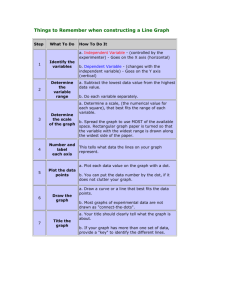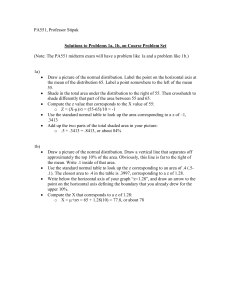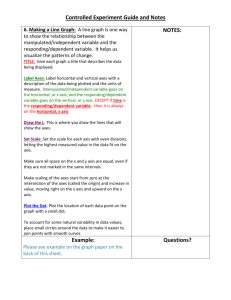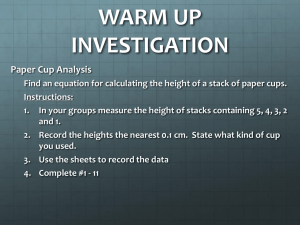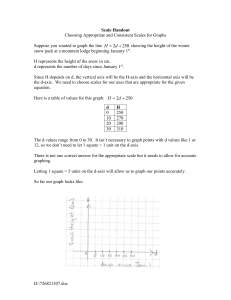How to Manually Construct a Line Graph
advertisement
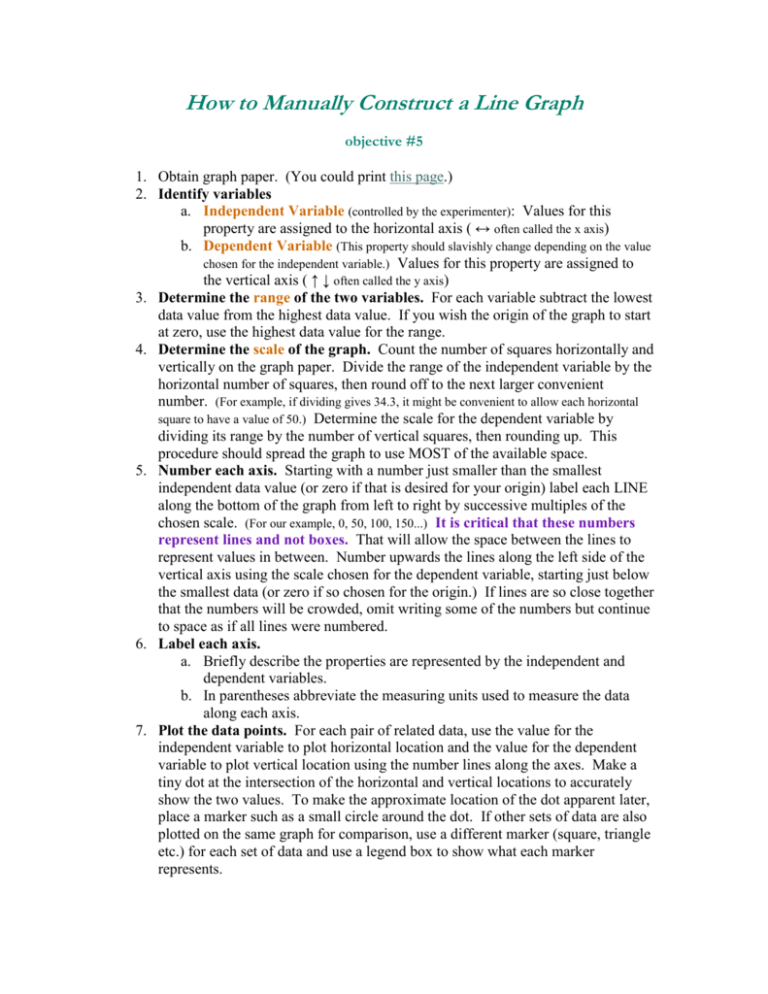
How to Manually Construct a Line Graph objective #5 1. Obtain graph paper. (You could print this page.) 2. Identify variables a. Independent Variable (controlled by the experimenter): Values for this property are assigned to the horizontal axis ( ↔ often called the x axis) b. Dependent Variable (This property should slavishly change depending on the value chosen for the independent variable.) Values for this property are assigned to the vertical axis ( ↑ ↓ often called the y axis) 3. Determine the range of the two variables. For each variable subtract the lowest data value from the highest data value. If you wish the origin of the graph to start at zero, use the highest data value for the range. 4. Determine the scale of the graph. Count the number of squares horizontally and vertically on the graph paper. Divide the range of the independent variable by the horizontal number of squares, then round off to the next larger convenient number. (For example, if dividing gives 34.3, it might be convenient to allow each horizontal square to have a value of 50.) Determine the scale for the dependent variable by dividing its range by the number of vertical squares, then rounding up. This procedure should spread the graph to use MOST of the available space. 5. Number each axis. Starting with a number just smaller than the smallest independent data value (or zero if that is desired for your origin) label each LINE along the bottom of the graph from left to right by successive multiples of the chosen scale. (For our example, 0, 50, 100, 150...) It is critical that these numbers represent lines and not boxes. That will allow the space between the lines to represent values in between. Number upwards the lines along the left side of the vertical axis using the scale chosen for the dependent variable, starting just below the smallest data (or zero if so chosen for the origin.) If lines are so close together that the numbers will be crowded, omit writing some of the numbers but continue to space as if all lines were numbered. 6. Label each axis. a. Briefly describe the properties are represented by the independent and dependent variables. b. In parentheses abbreviate the measuring units used to measure the data along each axis. 7. Plot the data points. For each pair of related data, use the value for the independent variable to plot horizontal location and the value for the dependent variable to plot vertical location using the number lines along the axes. Make a tiny dot at the intersection of the horizontal and vertical locations to accurately show the two values. To make the approximate location of the dot apparent later, place a marker such as a small circle around the dot. If other sets of data are also plotted on the same graph for comparison, use a different marker (square, triangle etc.) for each set of data and use a legend box to show what each marker represents. 8. Draw the line. Most graphs of experimental data are NOT drawn as connect the dots. Recall that all measurements contain experimental error, so as a result most dots are not exactly where they should ideally be located. To compensate for this experimentally error, try to draw a straight line that compromises, coming closest to nearly all the dots. Sometimes a straight line does not fit well. In that case, consider a. drawing several intersecting straight line segments, each of which fits much data. b. drawing a smooth curve that comes closest to nearly all the data. 9. Add a title, completion date, and author's signature. The title should be selected to clearly but briefly tell what the graph is about. Avoid cute teasers that attract attention but leave out critical information.

